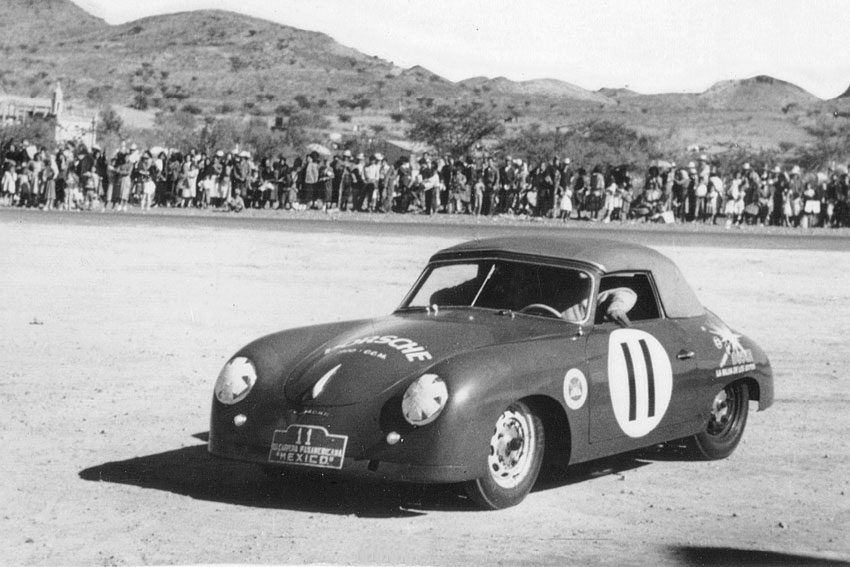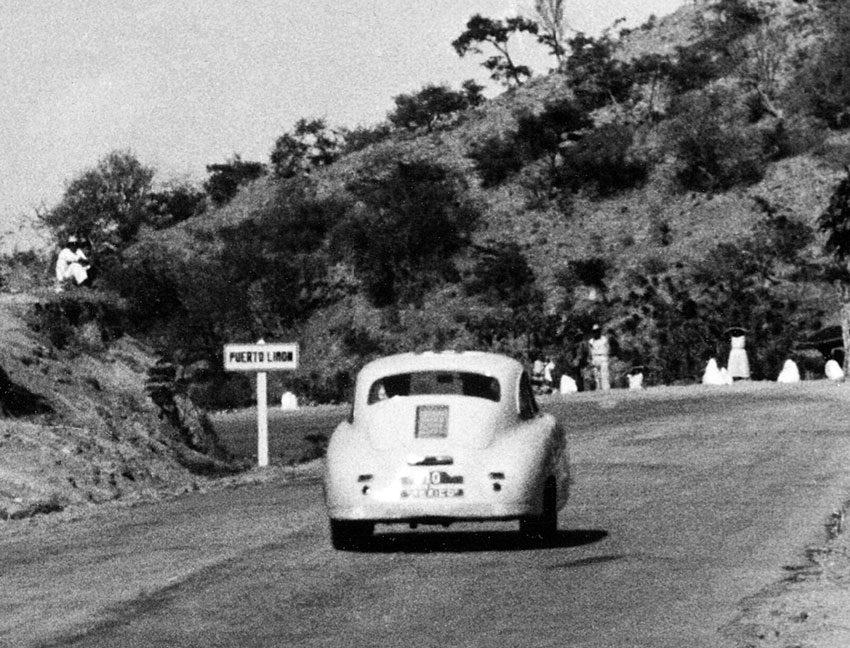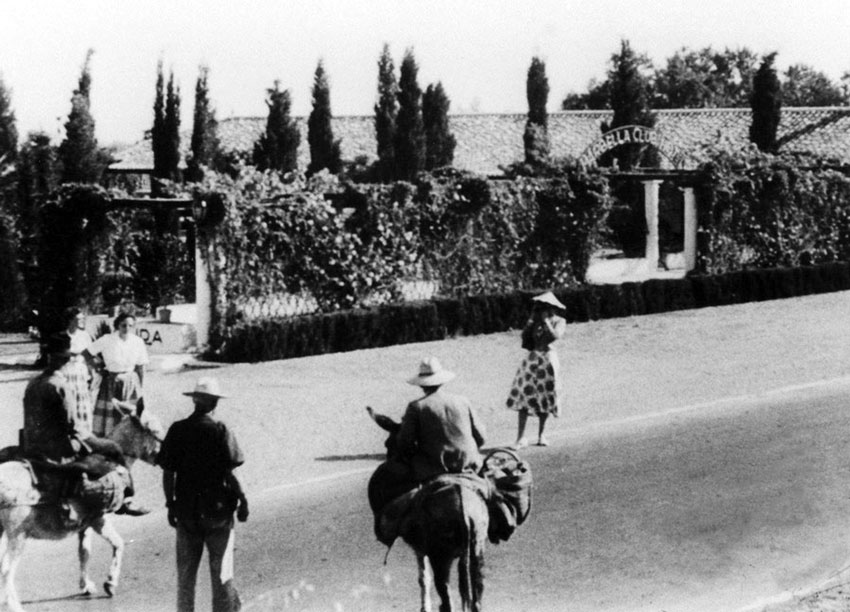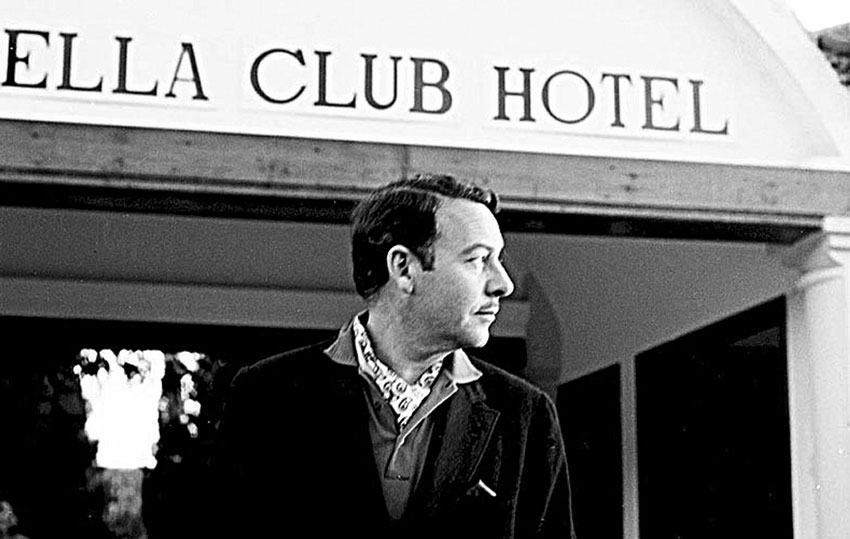“Prince von Hohenlohe.”
Those were the first words after only two rings. I had called the Marbella Club on the Spanish Costa del Sol to reach von Hohenlohe for an interview about his involvement with Porsche and la Carrera Panamericana-Mexico in 1952. I expected a protective layer of telephone security, but it was his club and the prince famously wanted to know everyone. My call was in 1982. The Marbella Club Hotel, which he founded in 1954 when he was 30, had become the winter home of his old-line aristocratic friends from the Almanach de Gotha, Europe’s directory of royalty and nobility.While he was expanding the little coastal finca, the estate he had purchased with his father, into a world-renowned beach resort, he was also developing his Volkswagen distributorship in Mexico, the Volvo franchise for Spain, a car dealership in Texas. And in 1955 he married fifteen-year-old Princess (and heiress to the Agnelli/Fiat fortune) Ira Furstenberg.
I had called about the 356 coupe and cabriolet entered in the 1952 Carrera and their aristocratic drivers. The prince, whose full name was Prince Alfonso Maximiliano Victorio Eugenio Alexandro María Pablo de la Santísima Trinidad y Todos los Santos zu Hohenlohe-Langenburg, began the tale and he continued for about 45 minutes with his voice climbing in volume and clarity. While growing up, private tutors taught him to speak German, Spanish, French, and English fluently.

In the summer of 1952 Stuttgart staged an exposition to announce to the world that it was ready for full production. Among those in the Porsche display were Prince Alfonso von Hohenlohe, recently contracted as distributor for Volkswagen in Mexico, and his cousin Philipp Constantin Count of Berckheim, just returned from his class win in a 356 in the Mille Miglia. During a discussion of Porsche distribution, young Dr. Porsche invited von Hohenlohe to add Porsche cars to his VW operation in Mexico City. The idea was appealing and a formal agreement was concluded.

La Carrera Panamericana
Von Hohenlohe was well aware of the importance of the Carrera to Mexico City’s motoring gentry. When his first two Porsches arrived (a coupe and a cabriolet, the latter with the first of Porsche’s new synchronized gearboxes) he invited Count Berckheim and another cousin, Prince Paul Alfons Fürst von Metternich-Winneburg, also a veteran racing driver, to come to Mexico and run the two cars in the third Carrera to publicize his new distribution agreement with Porsche. They arrived in Mexico City early in November 1952, and did some brief reconnaissance of the race route on the outskirts of the city. Porsche granted the best support it could, in the person of Herbert Linge, both expert mechanic and skilled co-driver. The entry formalities were accomplished and the cars were numbered: 11 for the cabriolet with von Metternich and his new acquaintence Baron Manuel de Teffé von Hoonholtz, a Brazilian diplomat with some race experience whom he had met at a pre-race reception, and number 10 for the coupe for Berkheim and von Hohenlohe, whose family had forbade him to drive in the event — apparently not aware that he might find an alternate place in the car.
Prince von Metternich has written that de Teffé was offered a drive, but he wore enormous glasses and his poor eyesight prevented him from maintaining high speed. However, he did change 32 tires on the Porsche during the first few legs of the event. After they had used all the Continentals the team brought from Germany, like many others they changed to Mexican Goodyear Ezcadi tires. Von Metternich wrote that the harder Mexican tires wore better on the abrasive roads and were actually slightly larger in diameter than the Continentals and gave a small increase in top speed.
Porsche had sent Linge to travel with the Mercedes-Benz crew should trouble occur on the road. Trouble struck on the second day. Von Berckheim’s coupe had to be withdrawn after a minor accident when repairs could not be made in time. Von Hohenlohe, driving an Oldsmobile, towed the crippled coupe to Puebla. From this point on the prince spent the entire race speeding from checkpoint to checkpoint running parts or tools to support his new Porsches and his old friends.

Shortly after Puebla, the synchronized gearbox began to fail in von Metternich’s cabriolet. Upon arrival in the Mexico City checkpoint Linge went immediately to work on the gearbox using Alfred Neubaur’s Mercedes-Benz team facilities. The first aid accomplished, Linge replaced de Teffé as co-driver just in case of additional trouble arose enroute to the finish. It did. After the fifth leg at the Durango service layover, Linge discovered a valve stuck open. He worked from 11:00 pm until 4:00 the next morning making a repair and assuring himself that the entire valve train was sound for the final sprint to the finish. It apparently worked, as the cabriolet averaged 105 miles per hour on the last leg when it registered its 112 mile per hour maximum. Von Metternich averaged 83 miles per hour for the entire event.
At the finish von Metternich’s “toy car” held on to 8th in class and 25th overall. Mexican president Miguel Alemán awarded von Metternich his special prize for the best placed car under 1500cc.
Von Hohenlohe related most of this history over the phone and his voice rose with excitement as he relived those days from 30 years before. Then he began to tell his most favorite of the Carrera stories. While his Mexico City facility had been the preparation and repair facility for the Porsches including 550 Spyders, through the remaining years of the event, his best memory was of the seven Volkswagens he entered in the 1954 Carrera and all of them ran at full speed for the entire race without a failure. But that is another story.

Post Script
Von Hohenlohe was born in 1924 in Madrid into a family established in the 12th Century. He died in Marbella in December 2003. He was 79.
[A version of this story first appeared in Vintage Racer magazine Issue #10, 1982. Author Crane completely revised and updated it for this publication in Road Scholars Magazine. Crane also contributed information to Adriano Cimirosti’s book Carrera Panamera “Mexico”, reviewed elsewhere in this issue.]




